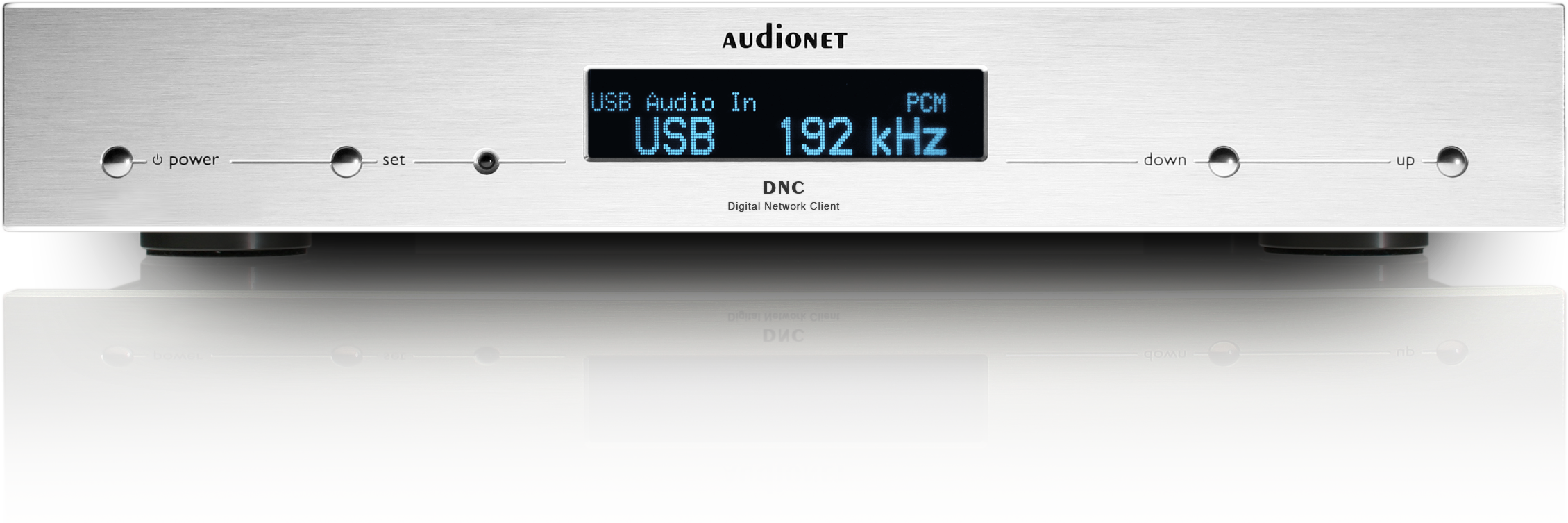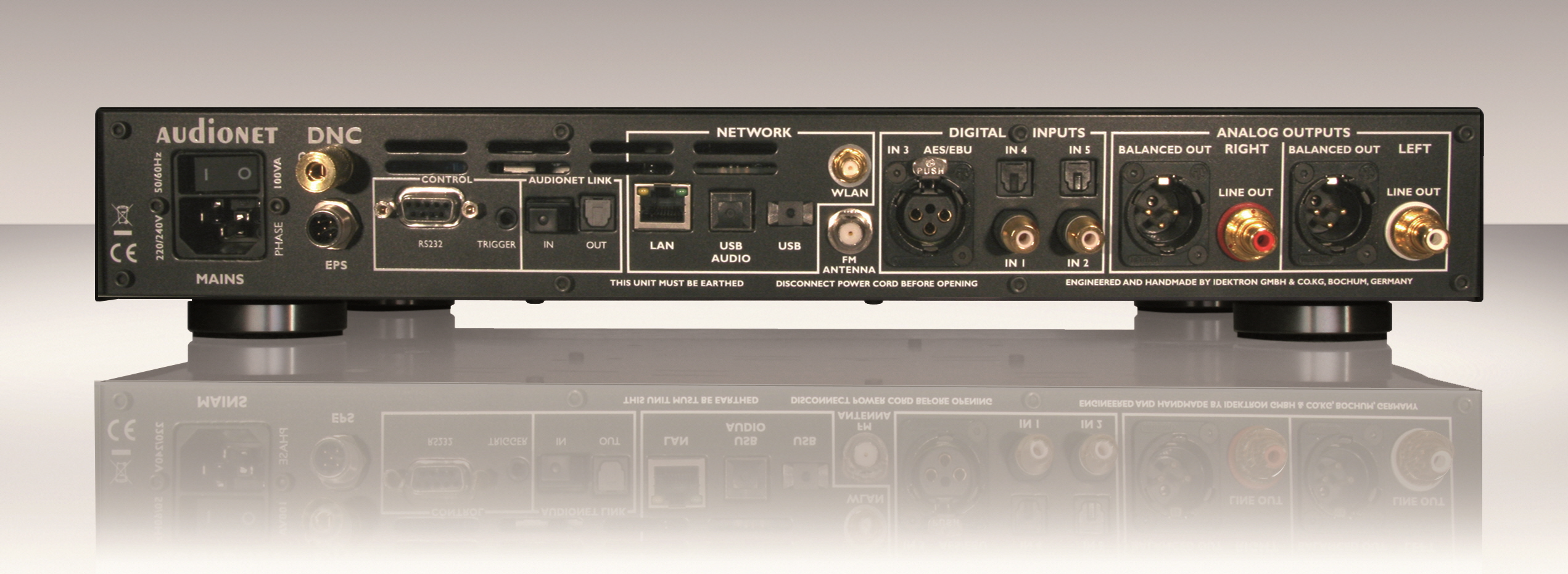- Product Infomation
|
|
- Product Detail
|
Construction
Over eighteen years of research and development into improvement of our components, proprietary software and the feedback of audiophiles at all stages allow the Audionet DNC to feature a sound that is rarely experienced in a streaming client. The digital and analogue sections and the correspondending power supplies are both electrically and physically strictly separated from each other and function independentely.
The digital parametric equalizer uses 5 Minimum Phase Equalizers (MPE), for main channels. Each MPE is configurable in filter type, frequency, gain, and Q factor within an unusually wide adjustment range, allowing the effective optimization of all parameters and compensation of less than ideal room characteristics or acoustical problems.
Signal Processing
In order to optimize the D/A conversion, Audionet¡¯s engineers pursued the uncompromising reduction and elimination of jitter, resulting in a highly exact, musical and solid sound image, stage and depth. To this end, we have developed Audionet¡¯s Intelligent Sampling Technology, which performs with stellar results the analogue signal recovery from the digital bit stream. Audio data is routed through a two-stage filtering and decoupling procedure. First, the input data is filtered with Audionet¡¯s proprietary software using a powerful signal processor and up sampled synchronously, through filters designed for optimal transient and frequency response. At the next stage, the optimized data is then resolved through an asynchronous up sampling procedure at 192kHz/24bit, allowing the complete isolation from any potential jitter originating from the input clock. The resulting audio data is then passed to two high-performance converters, which are clocked by dedicated ultra high precision quartz crystals and individually processed per channel into analogue signals. This method ensures that jitter faults are eliminated – completely lossless – in the analogue signal to the highest degree, resulting in unmatched clarity, room depth, and stage imaging. In addition, power flux interferences are avoided by powering the digital section of the DNC entirely separately from the analogue section.
Architecture
Neither did we make any compromises with the analogue signal processing of the Audionet DNC. In a lavish research and development phase every detail has been reconsidered and tested. The circuit design and the construction are designed for maximum performance.
Audionet researches, pursues and acquires exclusively only highest quality components worldwide, requiring in many cases custom design and production. For example, filter caps are designed to our specifications using Japanese silk dielectrics, custom mica caps, and selected high-current foil caps from Germany, manufactured for an ultra low loss angle. Internal wiring is done with top-grade silver/gold alloy, and the best available connection systems from our colleagues at WTB in Essen, Germany.
As part of our quest to use only the highest-grade components available, Audionet manufactures the DNC¡¯s operational amplifiers in house. Each Audionet op-amp contains more than 86 discrete components, and is characterized as a unique gain-bandwidth product.Signal flow and ground routing are implemented consistently in dual mono, in order to achieve maximum channel separation for high frequency characteristics, as well as circuit miniaturization and the shortest possible signal paths. The DNC¡¯s signal flow is completely unimpeded by coils, inductors, or capacitors in the path, contributing to the DNC¡¯s outstanding performance as an interface that excels in options and sound.
An independent power supply is included for the analogue hardware, with a 50VA toroidal transformer, 26,000 µF of filter capacitance, and a dual voltage stabilization by discrete and instantaneous voltage regulators. In addition, local voltage at each op amp is filtered again with an extra capacitance for a total of 8,000 µF.
Noise, distortions and crosstalk are reduced to a minimum and ensure a high level of energy, dynamics and purity of sound.
|
- Specification
|
INPUTS AND OUTPUTS
Technical Data
Frequency response: 0 – 96,000 Hz (-3 dB), DC-coupled
Slew Rate: 10 V/µsec
Channel separation: between channels: >100 dB at 20 kHz
Output voltage: Line: max. 3.2 Vrms
XLR: max. 6.4 Vrms
Output impedance: Line: 24 Ohm real
XLR: 48 Ohm real
Digital inputs
Sample frequency : 32kHz – 192 kHz
THD+N : < -104 dB
Power consumption : < 1 W stand by, max. 85 W
Mains : 220¡¦240 volts / 50¡¦60 Hz or 100¡¦120 volts / 50¡¦60 Hz
Dimensions : width 430 mm height 70 mm depth 310 mm
Weight : 8 kg
|

|

